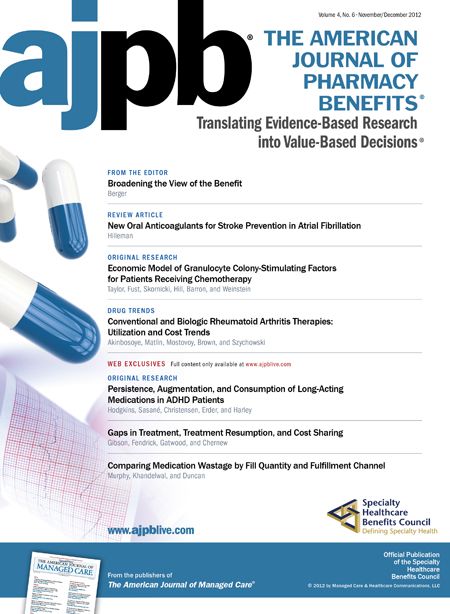Publication
Article
AJPB® Translating Evidence-Based Research Into Value-Based Decisions®
Broadening the View of the Benefit
Author(s):
More focus needs to be directed to the pharmacy benefit structure and appropriate use of medication in the pediatric population.
Sometimes that which is overlooked sneaks up on us.
One great proof of this statement is the concern over appropriate use of medication in the pediatric population. A couple of years ago, Medco Health Solutions, Inc, released data regarding the significant growth in the use of chronic medications in children and adolescents (from this point it bundled only under the heading of children). At about the same time, Josh Liberman and others (including this editor) at CVS Caremark released complementary data. Interestingly enough, still, little focus on the plan design or benefit structure for the population 18 years and younger has been made. The reason for this lack of attention and activity is multifaceted. First, although it is a rapidly growing area of medication use, it still pales in comparison to overall drug spend. A second reason for the lack of focus in this population is the absence of US Food and Drug Administration formal approval and safety testing and effectiveness. One area where that is not the case, however, is oncology medications. Pediatric oncology is guideline- and protocol-driven to a much greater degree than its adult counterparts.
So, if the drug spend allocated to pediatric use is still a relatively small portion of the whole, why focus our limited resources on something that will not have significant impact on overall healthcare cost and quality? I would argue that there are 3 reasons that now is a good time to concentrate our efforts on medication use in the pediatric population. As mentioned above, there are limited scientific data attached to many of the medications utilized in children. This paucity of information leads to the use of medications that in the very least are not effective, and more seriously, may be unsafe. Unsafe medications often cause side effects or complications that may lead to other medical problems with significant health and fi nancial implications. The second reason that we should seriously consider the pharmacy benefit issues in this population is that new healthcare reform has the potential to increase the number of insured children as the ranks in Medicaid swell. Pharmacy and Therapeutics committees also need to spend time planning design and coverage for children and adolescents since there is an increase in chronic diagnosis for medical problems previously dominated by the adult population. Most of us recently opened our newspapers and read about the alarming rise of pediatric diabetes in the pediatric population. The fact that 1 in 4 children in this country is at serious risk of developing type 2 diabetes should concern all of America. For those of us focused on quality healthcare, it should be even more concerning. This is a condition that can have serious implications and often requires a number of medications to address all of its related issues.
The “perfect storm” of an increase in the number of children with coverage, an increase in their potential medication needs, and the lack of good evidence as to the appropriate application of medications in the pediatric population creates a call to action for all of us to refocus our efforts in regard to good policies and guidelines in an often forgotten population—our nation’s children.
What are your organizations doing to address good pharmacy benefit designs for pediatric medication use? I would love to hear from you.







